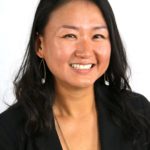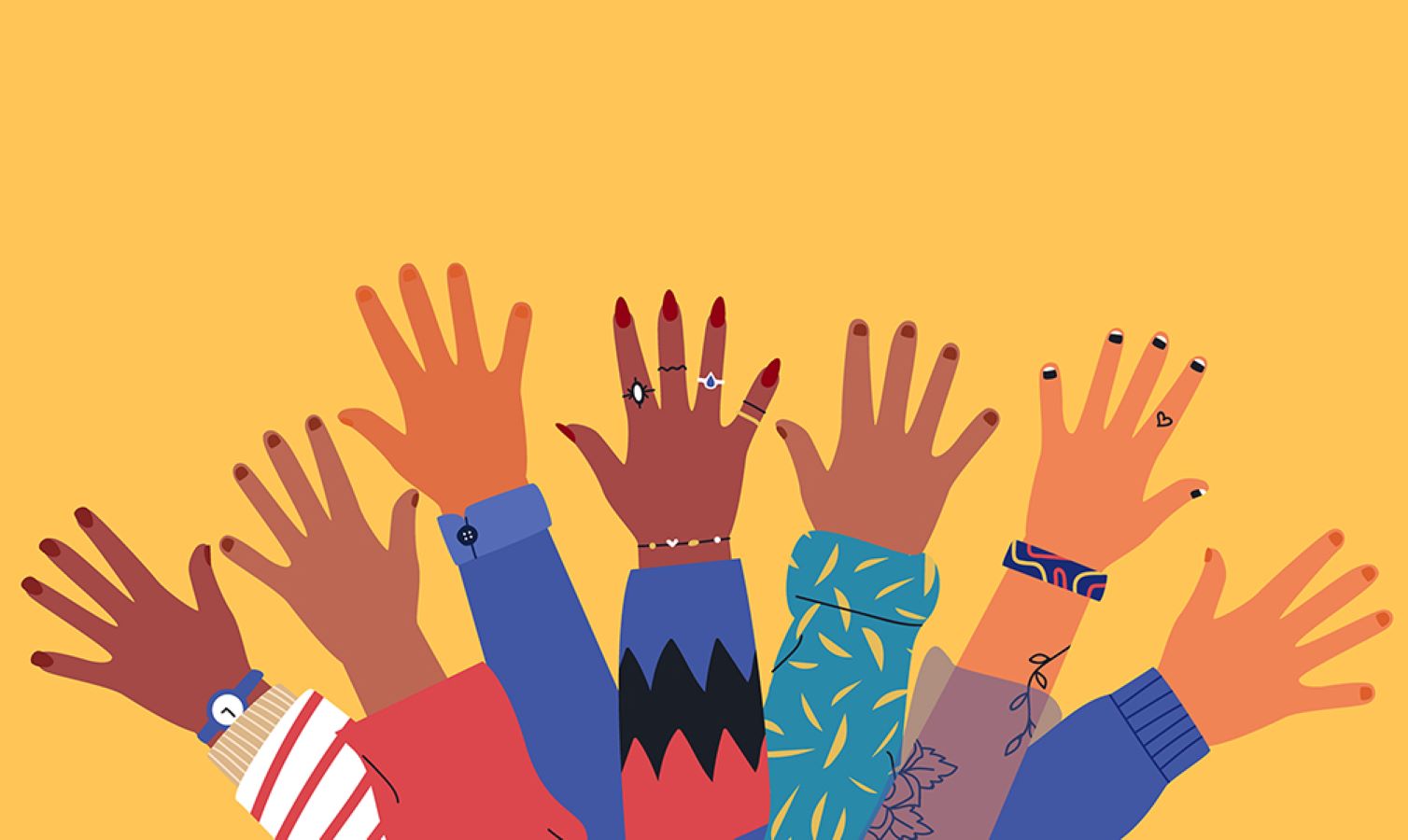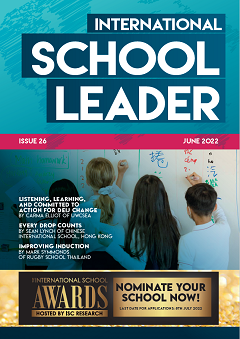By Kevin Simpson, Nayoung Weaver, Rama Ndiaye
This article is the second in a series of three, as a follow-up to the July 2021 ISC Research Edruptors Conference when Kevin Simpson served on a panel discussing Diversity, Equity, Inclusion, and Justice (DEIJ) – how politics inspire student engagement.
What can racism look or sound like in an international school that already believes that it is an authentically internationally-minded school?
All international schools are not as globally aware and open-minded as many believe. Some international schools are created for Westerners to have an education system reminiscent of their home country. The remnants of this colonial creation, which delineates a clear racial and class hierarchy, can still be felt in many international organisations. Dr Danau Tanu, author of Growing Up in Transit: The Politics of Belonging at an International School, Honorary Research Fellow at the School of Social Sciences, University of Western Australia, and Co-Chair of the FIGT Research Network Affiliate, says that many students and teachers of colour know that structural racism exists.
Being internationally-minded
The phrase ‘internationally-minded’ means different things for different people based on their lived experiences. Former Director General of the International Baccalaureate, George Walker made a poignant speech on internationalism during a 2005 conference in Geneva. When referring to global citizenship, he quoted a pamphlet from Washington International School in which they reflected on the best way to educate the global citizen:
Educating global citizens means much more than exposure to many nationalities, learning about multiple cultures, or even immersion in other languages. It requires giving students the outlook and skills that equip them with mental flexibility and a basic respect for perspectives other than their own.
A global citizen is one who seeks out a range of views and perspectives when solving problems. He or she does not ‘tolerate’ or ‘accept’ cultural difference or viewpoints, since these words implicitly place the speaker at the centre of what is acceptable and right. Global citizens proactively seek out those who have backgrounds that are different from their own, examine ideas that challenge their own and then enjoy the complexity.
A global citizen examines and respects differences, and evaluates them critically. He or she does not passively accept all ideas or philosophies. Engagement – in thought, in discussion, in active learning – is the basis for global citizenship.
This excerpt demonstrates one of the true meanings of being internationally-minded. Unfortunately, in many international schools, such a vision often becomes part of a business model to attract more affluent families and a performative nightmare that too often harms staff, students, and families of colour. This lack of self-reflection from the institutions – and their reluctance to acknowledge and grow – does a huge disservice to the student body and the community at large. Even when international institutions are willing to make cultural shifts, educators who are not interested in actively developing an anti-racist lens can become an obstacle towards this indispensable progress.
Model the right culture
Leaders need to understand that it is not merely enough to ‘mandate’ that their employees adhere to DEIJ practices. It is just as important to model a culture of inclusion and establish a zero-tolerance policy towards employees who actively exclude their colleagues. Too often we hear stories of black, indigenous, and other people of colour (BIPOC) who are tone-policed and perceived as aggressive for simply asking questions or bringing forth innovative ideas.
White Supremacy Culture, by Kenneth Jones and Tema Okun, argues that there are harmful characteristics and practices – which are often used as cultural norms – emerging from organisations. They state that this is subconscious enough that the slight criticism or questioning “of those with power is viewed as threatening and inappropriate (or rude)”, preventing an honest collaborative environment because some educators tend to “respond to new or challenging ideas with defensiveness, making it very difficult” for BIPOC to feel valued for their collaborative skills. This defensiveness creates an oppressive culture that ultimately trickles down to students and the community at large.
What racism and bias to staff looks like
The covert racism in schools that perceive themselves as authentically internationally-minded is just a small part of what often happens within the international school ecosystem. Here are a few other real-life examples of racism and bias to staff in international schools:
- A schoolwide diversity, equity and inclusion (DEI) statement developed by leaders only, all of whom were white.
- The DEI statement of a school was published on the website, but none of the professional development opportunities used an anti-racist lens.
- In a school filled with historically marginalised students, the entire leadership team and most of the teachers were white.
- An anti-bias, anti-racism (ABAR) committee established in an international school ended up being dismantled within a year because the leaders did not see it as valuable work. However, it continued to be referenced by the Head at association meetings as positive evidence of action.
- Despite the expertise of a BIPOC teacher, who had been leading sessions at a school that this teacher had customised based on her lived experiences at the school, the board, consisting only of white members, hired an external consultant without alerting the teacher.
- A statement to staff, by a DEI lead, that a BIPOC student report about racism on campus was based on misunderstandings.
- A white colleague claimed to get a migraine from the lunch smells of a BIPOC colleague, which was a local cuisine and sprayed perfume in the office area.
- A school’s DEI lead explained, at a staff meeting, how reverse racism worked.
- A white teacher refused to include her BIPOC teaching assistant at planning meetings.
- A BIPOC teacher was asked to recount details of the microaggression he experienced to a group of white-only leaders.
- DEI-certified BIPOC staff were required to share their expertise at school without compensation.
- A BIPOC staff member was hospitalised due to unsupported DEIJ work. She returned to a workplace that still had not established proper emotional and mental support systems.
There are a multitude of other examples that describe the lived experiences of historically marginalised educators in international schools. Many of these narratives are shared at Association of International Educators and Leaders of Color (AIELOC) meetings because some of these educators feel unsafe expressing themselves elsewhere for fear of retaliation. Moreover, international schools seem to lack the proper systems to support and empower them, with leaders often lacking the anti-bias lens and knowledge necessary to be culturally responsive to the students and staff they serve. Despite this lack of knowledge, many international schools continue to promote themselves as valuing international-mindedness. Has the concept of being globally minded simply become a sound bite to attract diverse families? What criteria are international schools using to assess the authenticity of their international-mindedness?
There appears to be a difference of perspectives between those who are doing the work authentically and those who are simply performing it. Many leaders seem to believe that simply allowing DEI work to happen in their school is sufficient to create a culture of inclusion. In his book, How to Be an Antiracist, Dr Ibram X Kendi argues that “[t]he only way to undo racism is to consistently identify it and describe it – and then dismantle it.”
It is therefore imperative for ABAR pedagogy to be a practice that is fostered into community values in order to uplift historically marginalised members and, ultimately, reach liberation for all. This approach is also a way to render visible the white supremacist values we have been internalising as individuals and upholding the world over.
Privilege and oppression to peers
White leaders and educators must also reflect and understand the privilege they have when opting into DEI meetings. Some may leave these spaces feeling a sense of accomplishment because of the ‘show of support’ they believe to have demonstrated. BIPOC teachers, on the other hand, often leave these spaces feeling drained, gutted, and sometimes exploited. The external and internal oppression can sometimes naturally become a part of the hidden curriculum to the unsuspecting students, which can, in turn, be detrimental to the globally-minded culture and curriculum educators are attempting to implement.
Leaders also need to reflect on the idea of ‘intent vs impact’. Often, their desire for people to ‘assume positive intent’ in DEI work puts on the back-burner the very real and negative impact a culture of exclusion can have on educators of colour. This attitude not only adds an extra layer of oppression on historically marginalised educators, but it also invites leaders to detach themselves from the responsibility of actively dismantling the racist systems in place. Unfortunately, in many international schools where international-mindedness and DEI work are merely performed, the burden of disrupting the system still lies on those who are marginalised. Being an internal agitator is a costly endeavour for BIPOC. However, it is an inevitable task. For many, BIPOC, DEIJ, ABAR education, liberation, etc, are not merely statements, commitments, initiatives, or professional learning opportunities – these concepts are part of our lived experiences, part of our values, and part of our identity.
What racism and bias to students looks like
Students of colour are also highly affected by the performative nature of some international schools that portray themselves as globally-minded. Reset Revolution, a student youth group that connects people from around the world to address social injustice through education and awareness, posted a collection of student stories on their YouTube account. Here are some examples of the harm and lack of support faced by some students of colour in their schools:
- “During my senior year, a student – in a higher physics or higher chem class ¬– said to another student that statistically speaking she’s the least educated person in the room because she is an African woman.”
- “I came with my Afro for the first time and people were just touching it. I made an Instagram post (about my frustration) and just a rant about how people should not touch my hair because it’s weird. The next day, kids made it a game to touch my hair. That was the new thing they were going to do.”
- “Some of my peers were making jokes about the KKK and when I approached the peer to let them know that I felt disrespected and uncomfortable, I was told by this peer and people (other peers) online to stop being so sensitive and that I needed to learn how to take a joke. So oftentimes I feel like I’m in a constant state of vulnerability.”
- “In my high school I think we were like 4 or 5 black kids… maybe… which makes you think a lot about your role and your confidence in what you want to pursue because you don’t have examples of what your life could look like so it is an isolating experience and you have to do a lot of learning by yourself.”
- “When you are in school with other international students, you can see and you can feel how one culture is dominant from the others.”
- “When we were running for student body president, we had student president debates on Zoom and during that Zoom call people would anonymously join the Zoom call and whenever certain people started speaking, including me, they started shouting out racial slurs. A couple of guys joined the live (session) and said that I looked like a ‘chocolate snack’ or something gross that really made me uncomfortable.”
- “You’re never taught to see a Black person in a position of power. There were so many things that you had to let slide if you wanted to be ok [and] get through the school year.”
These are the stories by students who learned the language to express their experiences. However, international educators and students, for the most part, are not trained with the anti-racist lens.
When these students were asked how these instances of racism were handled by their international school, the common replies were:
- “They did not do anything. They NEVER did anything.”
- “The way they dealt with it had me feeling constantly vulnerable. My one request was to not be around this particular student and instead I spent the rest of the year sitting across from him in history class where he continued to make microaggressions. I recall being scared just walking down the hallway and one afternoon he decided to corner me in the hallway. Teachers were around, they saw and they chose to do nothing. Not only would they not support me or pursue action but they would turn to me and see me as the bad guy.”
- “Representation, especially a small amount, is not enough to defeat racism. We can’t afford to just have an ignorant perspective or a passive perspective on racism.”
- “The lack of action of the school community has left me traumatised.”
Moving to authentic international-mindedness
From an anti-racist lens, these examples can be described as an abuse of power that keeps marginalised educators and students of colour ‘in their place’. At AIELOC, we hold many stories demonstrating how unethical international leaders are taking advantage of the lack of a centralised system that should hold them accountable for their unethical actions.
To be authentically internationally-minded means to not only partake in active learning, but have the ability to comprehend that our ‘criteria for truth’ can delineate boundaries if cultural understanding is lacking. As Walker stated in his speech, the concept of being ‘international’ does not merely correlate with the number of countries one may have visited. Travelling for the purpose of tokenising countries – while almost never attempting to embrace the local culture – leads to a superficial understanding of international-mindedness.
Historically, marginalised individuals need the healing space and time to intellectualise their lived experiences and see how they fit into this white supremacist world. On the other hand, people from the dominant culture cannot continue to intellectualise the work as it often results in increased oppression. The point is this: no matter how far along an international school is on its anti-racism journey, there will always be blind spots and racism that surfaces occasionally. Authentic international-mindedness can only flourish and thrive in spaces where everyone takes on the responsibility to self-reflect, acknowledge, and dismantle the inequitable systems in place.



Kevin Simpson is the founder of AIELOC and KDSL Global, a leading learning organisation focused on empowering educators and education businesses globally. Nayoung Weaver is an AIELOC Fellow. She has worked as a College Counsellor and Secondary School Math teacher in international schools in Asia. Rama Ndiaye is an AIELOC Fellow and an international elementary teacher. Connect with Kevin on LinkedIn.

